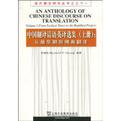中国翻译话语英译选集 上册
出版时间:2010-5 出版社:上海外语教育出版社 作者:张佩瑶 页数:268
Tag标签:无
前言
上海外语教育出版社从成立以来一直是我国外语教育最优秀的后勤部和侦调部。因为它不但为我国各个层次(尤其本科与研究生层次)的外语教育提供了多种高水平的教材、教参和工具书,而且还出版了多学科、多语种和多系列的中文版和外文版的学术著作,比如“现代语言学丛书”、“牛津应用语言学丛书”、“美国文学史论译丛”、“外国文学史丛书”、“剑桥文学指南丛书”、“当代英语语言学丛书”以及列入国家及教育部规划的人文社科重点项目的外国语言文学、文化等方面的图书等。为了适应我国现代化建设和教育改革的需要,还出版了一批国际金融、对外贸易、涉外保险、国际经济法、国际新闻和管理科学等方面的教材与专著。这些著作在外语的学科建设与学术研究以及复合型人才培养等方面都在发挥着强而有力的侦察、调研和指导作用。这是外语界有口皆碑的。 随着中外文化交流的纵深发展以及我国现代化建设对人才的需求,对比语言学和翻译学近些年来在我国有了较快的发展,最突出的证据就是①外语类硕士博士点上研究对比与翻译方向的学生在逐年迅速增多,而且我们的高校已经有了翻译学院和翻译系(当然还太少)。②外语专业的学生考中文、法律等其他人文社科专业的硕士、博士以及反方向的走向已经起步。这种跨学科的人才已成为人才资源竞争的最主要对象,因此发展趋势定会看好。上海外语教育出版社为适应这种高层次人才培养和新学科建设的需要,不但积极出版国内关于对比研究和翻译研究的专著和论文集,最近又推出了原版“国外翻译研究丛书”,这套丛书时间跨度从古代到现代,所选书目皆为译学发展史上有里程碑作用的名家名著,堪称译学经典。他们计划分批出版,以满足读者的需求。
内容概要
《中国翻译话语英译选集(上册):从最早期到佛典翻译》系统梳理了中国古老的翻译实践及翻译论述的发展脉络,遵循独特的选、译、评、注原则,按照时间顺序详尽地展示出一幅宏大的中国传统翻译话语画卷。本书的出版对于国际学术界了解中国传统翻译话语具有重要的意义,是中国的翻译论述、翻译研究走向世界征途中的重要一步,对国内的翻译研究,尤其对挖掘中国的传统译论、并对其进行新的解读,是一个颇大的推动。
作者简介
张佩瑶:香港浸会大学讲座教授,翻译学研究中心主任,协理副校长。在学术研究和翻译实践等方面均取得骄人成绩,著有多篇翻译批评、翻译史、翻译理论及翻译教学方面的文章;英译文学作品包括韩少功、刘索拉、朱天心、赖声川及荣念曾等名家作品。曾与黎翠珍合编An Oxford A
书籍目录
AdvisersAcknowledgementsMap: Lands of the Silk Road: Eastern Aspect at the Beginning of the 21 st CenturyChronology of Chinese DynastiesConversion Table: Pinyin to Wade-GilesAbout the EditorAbout the TranslatorsIntroductionPART ONE: FROM EARLIEST TIMES TO THE EASTERN HAN DYNASTY (25--220 CE)OVERVIEW1 Laozi (b. c. 570 BCE) ThE CONSTANT WAY (TAo) From Chapter 1, Tao-te-ching 道德经2 Laozi (b. c. 570 BCE) TRUSTWORTHY WORDS ARE NOT BEAUTIFUL From Chapter 81, Tao-te-ching 道德经3 Kongzi (Confucius) (traditionally 551-479 BCE) CLEVER WORDS CAN HARDLY BE PART OF TRUE VIRTUE From Verse 3, Book 1, Lunyu 论语 (TheAnalects)4 Kongzi (Confucius) (traditionally 551-479 BCE) LEARN TO DEVELOP MORAL QUALITIES From Verse 6, Book 1, Lunyu 论语 (The Analects)5 Kongzi (Confucius) (traditionally 551-479 BCE) A LEARNED MAN From Verse 7, Book 1, Lunyu 论语 (The Analects)6 Kongzi (Confucius) (traditionally 551-479 BCE) SUBSTANCE AND ATTENTION TO FORM AND BEAUTY From Verse 18, Book 6, Lunyu 论语 (The Analects)7 Kongzi (Confucius) (traditionally 551-479 BCE) THE ABSOLUTE ESSENTIAL From Verse 7, Book 12, Lunyu 论语 (TheAnalects)8 Kongzi (Confucius) (traditionally 551-479 BCE) SINCERITY IS ALL-IMPORTANT From Verse 18, Book 15, Lunyu 论语 (TheAnalects)9 Kongzi (Confucius) (traditionally 551-479 BCE) GET YOUR MEANING ACROSS From Verse 41, Book 15, Lunyu 论语 (TheAnalects)10 Kongzi (Confucius) (traditionally 551-479 BCE) HE WHO IS SINCERE WILL BE TRUSTED From Verse 6, Book 17, Lunyu 论语 (TheAnalects)11 (Attributed to) Kongzi (Confucius) (traditionally 551-479 BCE) How MUCH USE CAN THERE BE IN A MINOR ART? From "Xiaobian"小辨 (Minor Arts), Chapter 74, Da Dai liji 大戴礼记 (Elder Dai's Book of Rites)12 (Attributed to) Kongzi (Confucius) (traditionally 551-479 BCE) THE RELATIONSHIP BETWEEN LANGUAGE AND MEANING From "Xici zhuan shang" 系辞传上 (Appended Statements, Part 1, Chapter 12), Zhouyi 周易 (Zhou Changes)13 (Attributed to) Kongzi (Confucius) (traditionally 551-479 BCE) ThE MAN OF TRUE VIRTUE From "Wenyanzhuan qianjiusan" 文言传·乾九三 (Sayings on Patterning [with reference to] the Third Line of Hexagram 1, Qian or Heaven), Zhouyi 周易 (Zhou Changes)……Biographies of Persons Mentioned in the TextWorks CitedReferencesTitle IndexName IndexGeneral Index
章节摘录
spiritual forms, and as remarks about taste, preferences, and constraints. The passages are framed by annotations and commentaries. The annotations provide historical, textual, contextual and other information to facilitate understanding of the passages translated. The commentaries at the end of each passage highlight links between entries and give the present editors comments on the ideas expressed in them. Both the annotations and the commentaries are presented in terms of contemporary concerns and preoccupations. This present-day voice interweaves with voicesfrom the past to set into motion a dialogic operation predicated upon the belief that there is no"innocent" writing. The Buddhist project of the past was rooted in ideology, just as the presentanthology is driven by the ideology of the editor. It is an ideology of intervention that works ontwo fronts. First, it seeks to make available for study a major non-western perspective from whichto look at general, technical or theoretical issues relating to translation, and thereby to promote aninternational translation studies, one that is less limited by the Eurocentric mode that dominatesthe present scene. Second, it seeks to re-root/re-route the development of translation studies in China by producing a work of translation through which researchers unfamiliar with classical Chinese can acquaint themselves with traditional writings about translation - a circuitous path, no doubt, but important for opening new possibilities for development?II. OVERALL TRANSLATION POLICYThe overall translation policy is informed by the editors view that this particular anthology high-lights translation as a form of cultural representation, and not merely as a process ofinterlingualcommunication. The aim is to achieve what Kwame Anthony Appiah calls "thick translation",that is a way of translating that can promote in the target language culture a fuller understand-ing of and a deeper respect for the culture of the Other. For the present anthology, whose editorand translators are all Chinese, thick translation takes the form of self-representation rather thanrepresentation of the Other, and is aimed at promoting in the target language culture a fullerunderstanding of and a deeper respect for Chinese culture.iv~ For a fuller exposition ofthe ideology ofintervention which this anthology is meant to serve, see Martha RY.Cheung, "Representation, intervention and mediation: a translation anthologists reflections on the complexitiesof translating China" (Cheung forthcoming a). For a discussion of the related issue of why the articulation ofideological position is important, see Martha P.Y. Cheung, "Politics of representation: a translation anthologistsself-examination" (Cheung 2005a). For a more detailed mapping of the directions for theoretical developments in the discipline of translation studies on the Chinese mainland, see Martha P.Y. Cheung, "A few suggestionsfor the development of Chinese theoretical discourse on translation"对中国译理论建设的几点建义Zhongguo yixue lilun fianshe de fidian fianyi, Cheung 2004).The term "thick translation" was first used by Kwame Anthony Appiah, who invented the expression as avariation of the term "thick description" popularized by the ethnographer Clifford Geertz, who in turn borrowedit from the philosopher Gilbert Ryle. Ryle the philosopher is interested in "the thinking of thought", and "thickdescription" is a mode of description aimed at articulating the "immense though unphotographable differences"between acts and behavionr that are apparently similar or identical (Ryle 1971:480). Geertz applies Ryles insightto ethnographical work, and emphasizes that "thick description" should be used for observing, understanding,interpreting, describing, and "inscribing" another culture in writing (Geertz 1973:19). "Thick description", ac-cording to Geertz, is not the same as total description and, because of its interpretive nature, it is always partialand incomplete, though more adequate and more thorough than "thin" or "less thick" descriptions. Appiah, inturn, develops his notion of "thick translation" from Geertzs "thick description". To him, "thick translation"serves a specific political and pedagogical purpose, and that is to promote in the target language culture a fullerunderstanding of and a genuinely informed respect for the cultures of others (Appiah 2000:427).
编辑推荐
本书是“国外翻译研究丛书”之《中国翻译话语英译选集(上)》,主要对中国古老的翻译实践及翻译论述的发展脉络作了系统的梳理,并按照时间顺序详尽地展示出一幅宏大的中国传统翻译话语画卷。该书可供各大专院校作为教材使用,也可供从事相关工作的人员作为参考用书使用。
图书封面
图书标签Tags
无
评论、评分、阅读与下载
用户评论 (总计4条)
- 西方翻译理论充斥中国理论界,把中国传统译论译介到国外,促进中西理论交流,本书可谓里程碑式的著作。译文很给力,期待下编早日面世。
- 很好的书,要好好研究一下
- 专业文献,质量可靠。
- 还没看,是全英文的,听说不错
